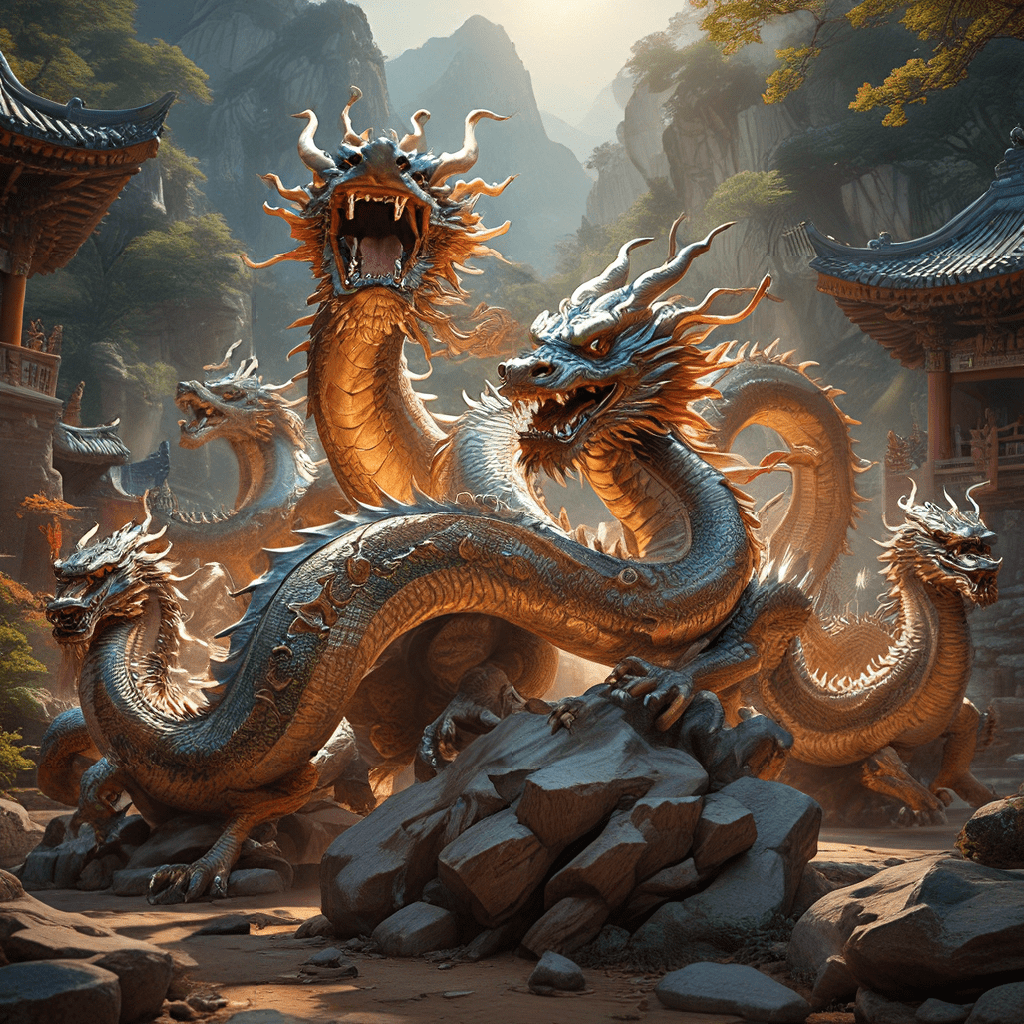The Tale of the Inugami: The Dog Spirit in Japanese Folklore
I. Introduction
The Inugami is a malevolent spirit dog in Japanese folklore, created through a dark ritual involving a dog's death and possession by a vengeful entity. In Japanese culture, dogs hold a significant spiritual status, revered as protectors and messengers of the kami (deities). However, the Inugami represents a twisted perversion of this sacred bond, embodying a vengeful and malevolent spirit that wreaks havoc and misfortune.
II. The Dog as a Spiritual Figure in Japanese Culture
In Japanese mythology, dogs are closely associated with the afterlife, often depicted as guides leading the dead to the underworld. They are revered as guardians against evil spirits, protectors of households and travelers, and messengers of the gods. The Shinto belief system holds that all things possess a kami, known as animism, which extends to dogs, granting them a sacred and respected position in Japanese society.
III. The Creation of an Inugami
Creating an Inugami is a dark and forbidden ritual involving the sacrifice of a dog, usually a black dog, and the invocation of a vengeful spirit. The dog is starved, tortured, and buried alive, its怨念 (on'nen), or powerful grudge, fueling the creation of the Inugami. Through incantations and rituals, the spirit of the dog is possessed by the vengeful entity, resulting in a malevolent being bound to the creator's will.
IV. The Powers and Abilities of an Inugami
Inugami are said to possess various supernatural capabilities, including the ability to inflict illness, curse individuals and families, and cause misfortune and chaos. They are believed to be particularly adept at stealth and infiltration, able to move unnoticed and execute their master's vengeful desires. The control over an Inugami is tenuous, as it may turn on its creator if not handled with proper respect and fear.
V. The Use of Inugami in Folklore and Superstition
The Inugami has a prominent place in Japanese folklore, often serving as a cautionary tale against harboring vengeful thoughts and actions. Stories abound of individuals who create Inugami to exact revenge, only to face dire consequences themselves. The mere mention of an Inugami can instill fear and superstition, underscoring its potent and malevolent nature within Japanese culture.
VI. Famous Legends and Tales Involving Inugami
In Japanese folklore, numerous tales and legends surrounding Inugami have shaped cultural beliefs and superstitions. One prominent story involves the tale of the Inugami of Okamiyama, where a vengeful spirit possessed a dog, causing widespread terror and death. Another well-known legend tells of the Inugami of Yotsuya, a ghostly dog that haunted a samurai's family, seeking retribution for a past wrong. These stories serve as cautionary reminders of the dangers associated with creating and harboring vengeful Inugami.
VII. The Inugami in Modern Japanese Culture
Despite modernization, the Inugami remains a potent figure in Japanese culture. References to Inugami can be found in literature, film, and anime, reflecting their enduring presence in the cultural consciousness. In the popular anime series "Naruto," the character Kiba Inuzuka fights alongside his loyal dog, Akamaru, who is imbued with the spirit of an Inugami, showcasing the enduring fascination with these supernatural creatures.
VIII. The Ethical Implications of Inugami
The creation and use of Inugami raise complex ethical concerns. The practice involves animal cruelty, as dogs are subjected to torture and death to create a vengeful spirit. Moreover, the intentional creation of malevolent entities poses moral questions about the consequences of such actions. The potential for harm and exploitation associated with Inugami underscores the importance of ethical considerations in dealing with supernatural beliefs.
IX. Inugami and the Supernatural
Within the complex tapestry of Japanese supernatural beliefs, Inugami occupy a distinct position. They are not considered deities or spirits in the traditional sense but rather manifestations of vengeful energy. Their connection to dogs, animals revered in Japanese culture, further complicates their nature, blurring the lines between the sacred and the malevolent.
X. Conclusion
The Inugami, with its chilling presence and potent malevolence, embodies a dark aspect of Japanese folklore. Its creation through a cruel and vengeful ritual underscores the dangers of harboring negative emotions and the consequences of tampering with the supernatural. While Inugami may fade from prominence in modern society, their enduring presence in culture and superstition serves as a reminder of the enduring power of myth and the complexities of human nature.
FAQ
Q1: What is an Inugami?
A: Inugami is a malevolent spirit dog in Japanese folklore, created through a dark ritual involving the sacrifice of a dog and possession by a vengeful spirit.
Q2: Why are dogs associated with Inugami?
A: In Japanese mythology, dogs are revered as protectors and messengers of the gods. However, the Inugami represents a twisted perversion of this sacred bond, embodying a vengeful and malevolent spirit.
Q3: Are Inugami real?
A: Inugami are creatures of folklore and superstition. While there is no scientific evidence to support their existence, they hold a potent place in Japanese culture and continue to influence beliefs and stories.
Q4: What are the ethical implications of creating an Inugami?
A: Creating an Inugami involves animal cruelty and the intentional creation of a malevolent entity. It raises questions about the consequences of such actions and the moral implications of tampering with the supernatural.
Q5: How are Inugami represented in modern culture?
A: Inugami continue to feature in literature, film, and anime, reflecting their enduring presence in the cultural consciousness. They serve as cautionary tales and add a touch of the supernatural to stories and narratives.




